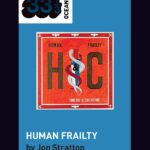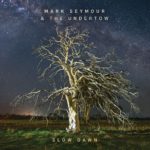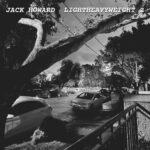Rock Thermodynamics
Extensive Rolling Stone article on the finishing up of Hunters and Collectors.
Author: Rolling Stone.
Date: April 1998.
Original URL: N/A.
Article Text
The First Law of Rock Thermodynamics is that it’s better to burn out than to fade away. But when the burn includes a 52-date national tour and the announcement that you’re breaking up on the top-rating Melbourne AFL Footy Show, then there’s always a danger that the burn-out starts looking like a sell-out.
But for Hunters & Collectors, after 17 years in the studio and on the road, there was no other way they could think of to call it a day. The band that made its name with its edgy brand of industrial funk before cultivating an earthier, more passionate brass-driven rock style, was determined to finish on a high note that was, if not high, at least loud.
Their legacy is almost two decades worth of swaying, pumping, sweat-drenched pub crowds, and a swag of household hits running the gamut from the tender passion of “Throw Your Arms Around Me” to the gut wrenching energy of “The Slab”. But the danger of destroying years of credibility had concerned the band, according to the forthright frontman, Mark Seymour.
“A few months ago when we were discussing the idea of doing this tour there was one kind of opinion expressed that it was a bit crass to do a break-up tour,” he says. “But I didn’t agree with that at all. I thought that in fact the people who’ve come to see us over the last 17 years deserve the recognition of having supported us. For us to go out with a new album full of new songs and to be promoting a new record is the right gesture to make.”
The enthusiasm for the new album, Juggernaut, runs through the band. Guitarist and new boy Barry Palmer (he’s only been in the band for 10 years) admits he was initially against recording a whole new album. “But when it became apparent that this really was going to be the end, I was happy to put my hand up. Usually bands put out a “Best Of” album and chuck a couple of new songs on specifically targeted at radio. But to quit with a whole new album – that’s got to be a world first.”
Announcing that your 17-year career is ending on the AFL Footy Show, a program best known for a rough sense of humour and a fascination with cross-dressing, also constitutes something of a world first.
“Oh God,” Seymour says when the topic is broached. It was the top rating Grand Final edition of the show, broadcast from Melbourne’s tennis centre before a studio audience of 12,000 – and it was all the idea of their record label boss, Seymour says.
“That was a Michael Gudinski strategy. Michael has these ideas. He does have a certain kind of genius for bringing people together. He just said (Seymour whispers), “You guys get on the show and you announce to three and a half million people that you’re retiring. It’s just going to have this amazing impact!” He just thought it was the best idea he’d ever had.”
The offer did come as a bit of a surprise. Trumpeter Jack Howard has recently earned the tag “Mr.Football” after writing the song “Thank God the Footy’s Back”, which has been chosen as Channel 7’s footy theme tune this year. He can’t say that he’s a great fan of the Footy Show though. “I can’t stand it, never watch it” he says. “But we had a low profile at the time. It was an opportune time, they came to us, it was pretty hard to turn down.”
And Seymour says, it meant getting the news out once and for all. “It really short-circuited all the scuttle-butt that was flying around about the band,” he says. “I’d got really tired over the previous couple of years of constantly fielding questions about where the band was going and what was in store. Some people may have regarded (the Footy Show announcement) as being….well, I don’t know, who knows? How do you do these things?”
It’s a long way from the grimy inner city pubs where the Hunters started, to a prime-time audience at the tennis centre. Not that the Hunters were ever strangers to the hard glare of publicity. Even in late ’81 and ’82 there was an effortless hype surrounding the band that dared to challenge the guitar-bass-drums archetype with brass and percussion, including a huge trademark gas cylinder.
Filling the void left by the Birthday Party, which had gone overseas to pursue fame and fortune, the Hunters packed out gigs, refused to do Countdown and released a stunning film clip for “Talking to a Stranger”. Global domination seemed like a formality.
A six month spell in England though completely changed the direction of the band, artistically and commercially. Commercially, band members speak fondly of the so-called Shepherds Bush Curry House Incident, which took place the day the band had signed a deal in the UK with Virgin. They were being taken to a nice Indian restaurant in inner London and the record company was picking up the tab.
Trombonist Michael Waters remembers that the novelty of somebody else paying encouraged them to select the most expensive wines and stock up on cigarettes. When the band’s British hosts started passing around some fairly potent spliffs, the travel-weary musicians could have been drinking truth-serum.
Suddenly, heated discussions erupted at one end of the table, says drummer Doug Falconer, and people were exchanging a bit of verbal about “questionable” financial practises. “It was amazing,” Falconer says. “Within six hours of the band having been signed we were arguing with the record company. I don’t think even Iggy Pop could compete with that.”
Virgin turned cool on the band and the Hunters returned to Australia disillusioned. Things hadn’t worked out, and now creative tensions between band members were being stretched to breaking point
Seymour was losing interest in being hip, feeling that it was restricting him from making deeper, more personal statements. “I was young and angry at the time, and I resented the kind of fishbowl that I felt that that sort of audience had put us in, the fashion hungry audience. I really purged myself of that crowd.
“When we came back from England I saw Ian Rilen’s (band) X, and I wanted to do something a lot more male and rock, simple rock, Australian rock music – that’s what I wanted to do. There was a shift in the language, there was a shift in what cultural statement we were trying to make. For better or worse I thought it was more artistically honest, and braver, to actually embrace the idiom of the kind of music those people would’ve shunned because it was a mainstream, suburban Australian kind of thing.”
Seymour found himself locking horns with the band’s percussionist, Greg Perano, who had done so much to shape the Hunters sound. “There was just too much distance in that first album, it was too obscure,” Seymour says. “It was a great sounding record but it wasn’t really that honest of a basic level to me.
“Greg is really a creative guy, and I understand where he’s coming from now, with the benefit of hindsight, but I just don’t agree you can get away with writing arty songs that are only half understood by people, simply because they have a groovy feel to them. I wasn’t prepared to live with that.”
Communication broke down between Seymour and Perano and the situation came to a head. “It was either him or me,” Seymour says matter of factly. “And I got the numbers. To paint an ugly picture. That’s literally what happened – people went with me and they didn’t go with Greg. He was very upset and he was very bitter, but fuck, you know, bands are very political, especially a band the size of ours. It’s just part of the landscape and you have to live with it.
As the dust settled the Hunters launched into a mighty, creative period that saw them forge a new, strangely Australian style of pub rock that turned over to reveal a sensitive underbelly. The band’s sound man Rob Miles still rates Human Frailty (1986) his favourite Hunters album. “It was the time we realised we could make world-class records,” he says. “Until the line-up settled we had never been able to get that balance between power and aggression and the warmth. That’s when we realised we could do it all, put it all together. We could do love songs.”
Human Frailty was followed by What’s a Few Men? and Ghost Nation. Palmer, a long-time fan, signed up to relieve Seymour of some of his guitar duties. The band was on a roll, but still major commercial success eluded them.
Initially, going into a studio with a hotshot American Producer who would take responsibility for everything seemed like a good idea. 1992’s Cut produced by Don Gehman, pushed tracks such as “True Tears of Joy” and “We the People” into the charts. “We liked the idea of somebody else taking the reins,” says horn player and guitarist Jeremy Smith. “We met Gehman in LA and he told us we needed to write more songs. He’d worked with John Cougar Mellencamp and the Bee Gees; he was credited with inventing the foldback wedge when he worked with the Who. He had the Midas touch.”
Gehman brought samples; he brought loops; he brought a management technique that bitterly divided the band. Waters described him as a “New-Age Fascist”. “Cut” was a record that was no fun to make, but it was one of our most successful,” he says.
Demon Flower, in 1994 was the reaction to Cut, a return to big guitars and no outside producers – and no commercial airplay. The band members liked the album, but the momentum was ebbing. People were spending more time on side projects, such as families. The talk within the band turned increasingly to calling it a day.
But breaking up is hard to do. Michael Waters admits that when the band first started talking seriously about folding he was rattled – after all, many of these guys had never had real jobs. “The whole idea completely freaked me out. What was next?”
And what is next? Palmer will be able to focus on his band, Deadstar; Howard, who is working with a jazz singer, Nichaud Fitzgibbon, will be wondering where his footy song may lead him; Miles has an architecture practise to develop; Archer, who trained as a mechanical engineer, is trading his bass for a computer keyboard; Waters is moving into the business side of the music industry; Falconer has a musical project with his wife; Smith has a few musical plans (he wrote the theme music for ABC-TV’s 7:30 Report); Seymour has his solo career to focus on.
And as the farewell tour draws to its close, punters keep approaching band members with the same simple question – why? “I just say we knew eventually we were going to have to retire, and now’s the right time,” Seymour says. “It’s hard to know when it’s time to hang up the leopard skin tights – so to speak.”
DISCOGRAPHY
Hunters & Collectors
Released 26/7/82
The self-titled debut (a double) contained the classic single “Talking to a Stranger”. The video was on the first rock videos directed by Richard Lowenstein who later went on to direct a number of INXS videos. The debut album became the band’s first gold album – in New Zealand.
The Fireman’s Curse
Released 5/9/83
Containing the single “Judas Sheep”, the album resulted from the band’s first trip to the UK and Europe and was produced by German producer Conny Plank (who had also worked with Brian Eno and Kraftwork). The album was released by Virgin in the UK.
The Jaws of Life
Released 6/8/84
Recorded after a North American tour at the end of 1983 and again produced by Conny Plank, Jaws of Life was released in Australasia only and marked the debut of the new line up. The big single was “The Slab”. Shortly after this album, a 3 track EP featuring “Throw Your Arms Around Me” was released by CBS/Epic in the UK and Europe.
The Way to Go Out|
Released 6/5/85
Recorded in 1985 at the now deceased Venue in Melbourne, The Way to Go Out provides a record of the awesome power of the Hunters and Collectors live sound. The album was the first H&C title to sell over 20,000 units in Australia and has now been certified Gold. The band began an extensive touring schedule that has ultimately provided their core audience.
Human Frailty
Released 7/4/86
Hailed by many as one of the all-time great Australian albums, Human Frailty featured the hit single “Say Goodbye” (which reached #24 nationally). It marked the bands fullest year and was released in the US by IRS records and supported by extensively touring internationally. Human Frailty was the band’s first Australian gold album and their second in New Zealand – it reached #10 nationally. The album has now sold 100,000 copies and has been certified Platinum.
Fate (What’s a Few Men)
Released 19/1/87
Produced by American producer Greg Edwards (REM, John Cougar Mellencamp). Fate (What’s a Few Men) became the band’s biggest selling album, reached #16 nationally and yielded the hit “Do You See What I See”. The album was certified Platinum.
Ghost Nation
Released 27/11/89
Produced by the band and mixed in New York by E.T. Thorngren (Talking Heads, Robert Palmer and Eurythmics). It was preceded by their biggest selling single ever, “When the River Runs Dry”, which reached #23 nationally. The album went to #7 on the charts and certified double Platinum, becoming the band’s biggest selling album to date.
Collected Works
Released 19/11/90
Collected Works traced the rise of the band from their first album and the reworked version of “Throw Your Arms Around me” went to #34 nationally. The album went to #6, was certified double Platinum and has currently sold in excess of 150,000 copies.
Cut
Released 5/10/92
Produced by Don Gehman and the band, Cut was a deliberate move to embrace new sounds and technology. The release of Cut saw the Hunters & Collectors dominate the charts in a way they’d previously confined to the live circuit. Cut reached #6 nationally, stayed in the charts for a colossal 96 weeks and yielded two top 20 singles “True Tears of Joy” and “Holy Grail”. Cut was certified Platinum and was the longest charting highest selling album of any Australian band in 1993.
Demon Flower.
Released 9/5/94
Produced by Nick Mainsbridge and the band and mixed by Mark Freegard (the Breeders). The band’s ninth studio album saw the emergence of guitarist Barry Palmer as a vital force in the recording process. The first single “Easy/Panic in the Shade” was added to major radio on the day of release. Simultaneously released in the UK and Europe, the band toured there for seven weeks to support the release. The album was certified Gold in Australia.
Living in Large Rooms and Lounges
Released 27/11/95
A double live album, split in two parts: Large Rooms was recorded live at pubs across Australia over the past decade and Lounges was recorded live at the Continental in Melbourne. Lounges has Hunters & Collectors sounds as the never had before – semi-acoustic.
Juggernaut
Released 26/1/98
The farewell album.
Comments
Thanks to Stephen for typing this one out for us to enjoy!





